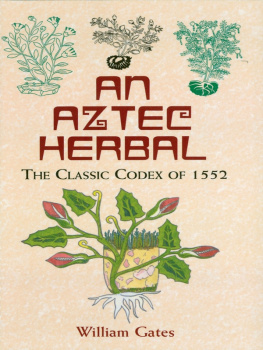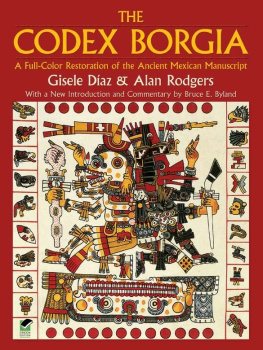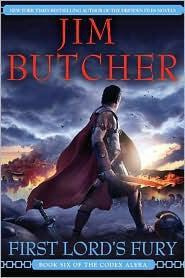Lord Eight Wind of Suchixtlan
and the Heroes of Ancient Oaxaca
THE LINDA SCHELE SERIES IN MAYA AND PRE-COLUMBIAN STUDIES
This series was made possible through the generosity
of William C. Nowlin, Jr., and Bettye H. Nowlin, the National Endowment
for the Humanities, and various individual donors.

Cities of the Ancient Mixtec World

Frontispiece map created by Elaine Day Schele, July 2008
Copyright 2009 by the University of Texas Press
All rights reserved
Printed in the United States of America
First edition, 2009
Requests for permission to reproduce material from this work should be sent to:
Permissions
University of Texas Press
P.O. Box 7819
Austin, TX 78713-7819
www.utexas.edu/utpress/about/bpermission.html
 The paper used in this book meets the minimum requirements of ANSI/NISO Z39.48-1992 (R1997) (Permanence of Paper).
The paper used in this book meets the minimum requirements of ANSI/NISO Z39.48-1992 (R1997) (Permanence of Paper).
Library of Congress Cataloging-in-Publication Data
Williams, Robert Lloyd.
Lord Eight Wind of Suchixtlan and the heroes of ancient Oaxaca : reading history in the Codex Zouche-Nuttall / Robert Lloyd Williams; foreword by F. Kent Reilly III ; introduction by John M. D. Pohl. 1st ed.
p. cm. (Linda Schele series in Maya and pre-Columbian studies)
Includes bibliographical references and index.
ISBN 978-0-292-72121-0 (cloth : alk. paper)
1. Codex Nuttall. 2. Manuscripts, Mixtec. 3. Eight Wind, 9351027. 4. Mixtec IndiansHistory. 5. Mixtec IndiansKings and rulers. 6. Mixtec languageWriting. 7. Picture-writingMexico. I. Title.
F1219.56.C62532W557 2009
972.01dc22 2009013444
Institutional E-book ISBN: 978-0-292-79334-7
Individual E-book ISBN: 978-0-292-77403-2
Dedicated to many: the great Mixtec people of Oaxaca, past and present, my professors Kent Reilly and Brian Stross, family, friends, un-friends, colleagues, fellow students, teachers, Bill and Sammie McCown, Richard McCown, Madge Simmons, and my brother Twelve Flower.
FOREWORD
Some seventeen hundred years ago in the mountainous western Mexican state of Oaxaca, a culture developed that left us with the rarest of commodities: books. This culturethe Mixtecsexisted in a world defined by mountains, valleys, and caves. Politically, this landscape was divided into a series of very small principalities that in many ways resembled the city-states of Renaissance Italy. The ruling lineages of this group focused on an ideology based on ancestors, marriage alliances, and warfare. The books that the Mixtecs produced were principally devoted to these genealogies and their roles in political legitimization.
Europeans first became aware of these native books, called codices, when Hernn Corts included two of them in his gift of New World curiosities to Emperor Charles V. They were among those items intended to elicit royal interest, delight, and amazement.
Since their introduction into the European academic landscape, these manuscripts have sparked strong interest. Though there have been many attempts at interpretation, the great breakthrough was achieved by Alfonso Caso when, in 1949, he published a definitive argument establishing their Mixtec origins (El Mapa de Teozacoalco, 1998). As Casos research progressed, it became apparent that these manuscripts contained historical information. He noted:
The Indians not only of Mexico, but from the whole of Mesoamerica possessed a true historical vocation, and they told and wrote history. (trans. Manuel Aguilar and Claudia Alarcon)
Since Casos groundbreaking discoveries there have been many efforts to recover the specifics of Mixtec history as they wrote it. Two of their documents have been resistant to historical, chronological analysis; namely, Codex Zouche-Nuttall obverse and Codex Vindobonensis Mexicanus I obverse. In them, the Mixtec calendar has been both a key and an impediment to the recovery of their historical information. In this volume, Robert Williams has selected these most difficult and obscure Mixtec manuscripts (chiefly Zouche-Nuttall obverse) for his work. Their obscurity rests on the fact that though the codex vignettes obviously describe marriages and warfare between diverse Mixtec elites, the convoluted chronologies associated with them have been unobvious and controversial. Williams, in this important study, shows that the calendar information is far from being merely metaphorical, resting as it does solidly on the Mixtec political need to accurately record alliances, the offspring of royal marriages, and the magical foundation of Mixtec rulership. The process and methodology through which Williams demonstrates this essentially linear historical chronology rests on his elucidation of the ingenious, complex format of Zouche-Nuttall obverse. Once the reader understands that the information revealed through the codex format and contents is a combination of both history in the European sense as well as the timelessness of myth in the Native American sense, then Mixtec history comes alive vividly.
With this publication, Robert Williams takes his place among the few academics who are cognizant of the human element in the ancient Mesoamerican past. The rulers of the Mixtecs, like their European counterparts, focused on enhancing their prestige through warfare and carefully crafted marriages. Williamss linking of these elements of elite behavior with the native calendar reveals aspects of Mixtec history that dwell in myth as well as literal time. This revelation, more than anything else, underlines the often-neglected fact that the Mixtecs were human beings concerned with many of the problems of contemporary humanity. These pages reveal that Mixtec history and ideological views have their counterparts in the history and ideological foundations of all humankind.
F. KENT REILLY III
Department of Anthropology
Texas State UniversitySan Marcos
AUTHORS PREFACE
In 1985, I studied Mayan hieroglyphic writing with Professor Linda Schele at her annual spring break Maya Hieroglyphic Workshops at the University of Texas at Austin. I taught introductory classes for her in 1987 and 1988 at that workshop. In 1989, Professor Schele asked me to found a Mixtec Pictogram Writing Workshop as an adjunct to the larger seminar because she wanted to increase the scope of the workshop to include as many Mesoamerican cultures as possible.
I subsequently taught two master classes on the Mixtec codices under Professor Scheles aegis at the University of Texas. Then followed a series of articles in 1991 about the first side of Codex Zouche-Nuttall for the periodical Texas Notes on Pre-Columbian Art, Writing, and Culture as well as an article in 1993 for the same journal, coauthored with Timothy Albright and Rex Koontz, titled Eight Deer Plays Ball Again: Notes on a New Codiacal Cognate. These are in the University of Texas Department of Fine Arts online files (CHAAAC). Mr. Albright and I also presented the five-hundredyear genealogy of Lord Eight Wind Eagle Flints at the 1993 SAA meeting in Anaheim, California. We demonstrated Lord Eight Winds descendants as recorded in several of the Mixtec codex genealogies from AD 935 until the Spanish Colonial era.
I taught the first Mixtec Seminar on Codex Selden in 1992 at the UT Maya Meetings Long Workshops, but on the proviso that an established scholar had to be engaged to direct subsequent annual sessions. Dr. John M. D. Pohl was that scholar, and in the next twelve years we established and codirected the curricula and taught the seminar. Professor Pohls leadership enabled me to evolve my thinking regarding the largely unexplicated sections of Codex Zouche-Nuttall obverse, which had been the subject of my previous articles. My masters thesis at Texas State UniversitySan Marcos, which due to space limitations concerned only the first eight pages of Codex Zouche- Nuttall obverse, was the direct result of my many years of study, research, and original thought about the topic. This book is an expansion of that thesis and a collection of essays on various topics in Mixtec codices.
Next page













 The paper used in this book meets the minimum requirements of ANSI/NISO Z39.48-1992 (R1997) (Permanence of Paper).
The paper used in this book meets the minimum requirements of ANSI/NISO Z39.48-1992 (R1997) (Permanence of Paper).